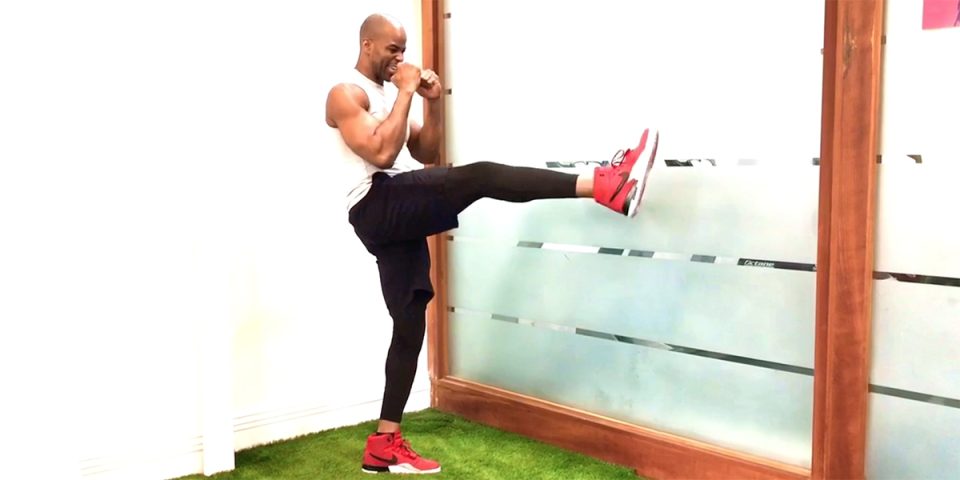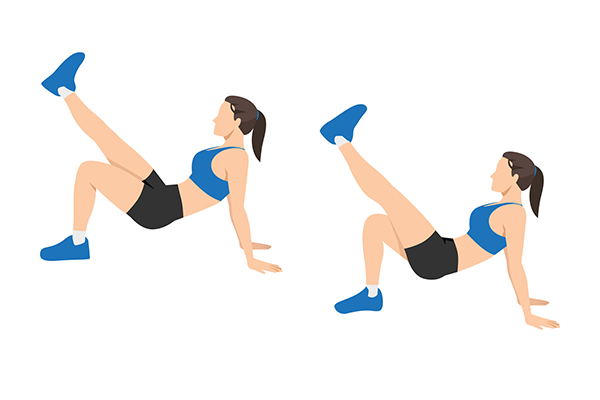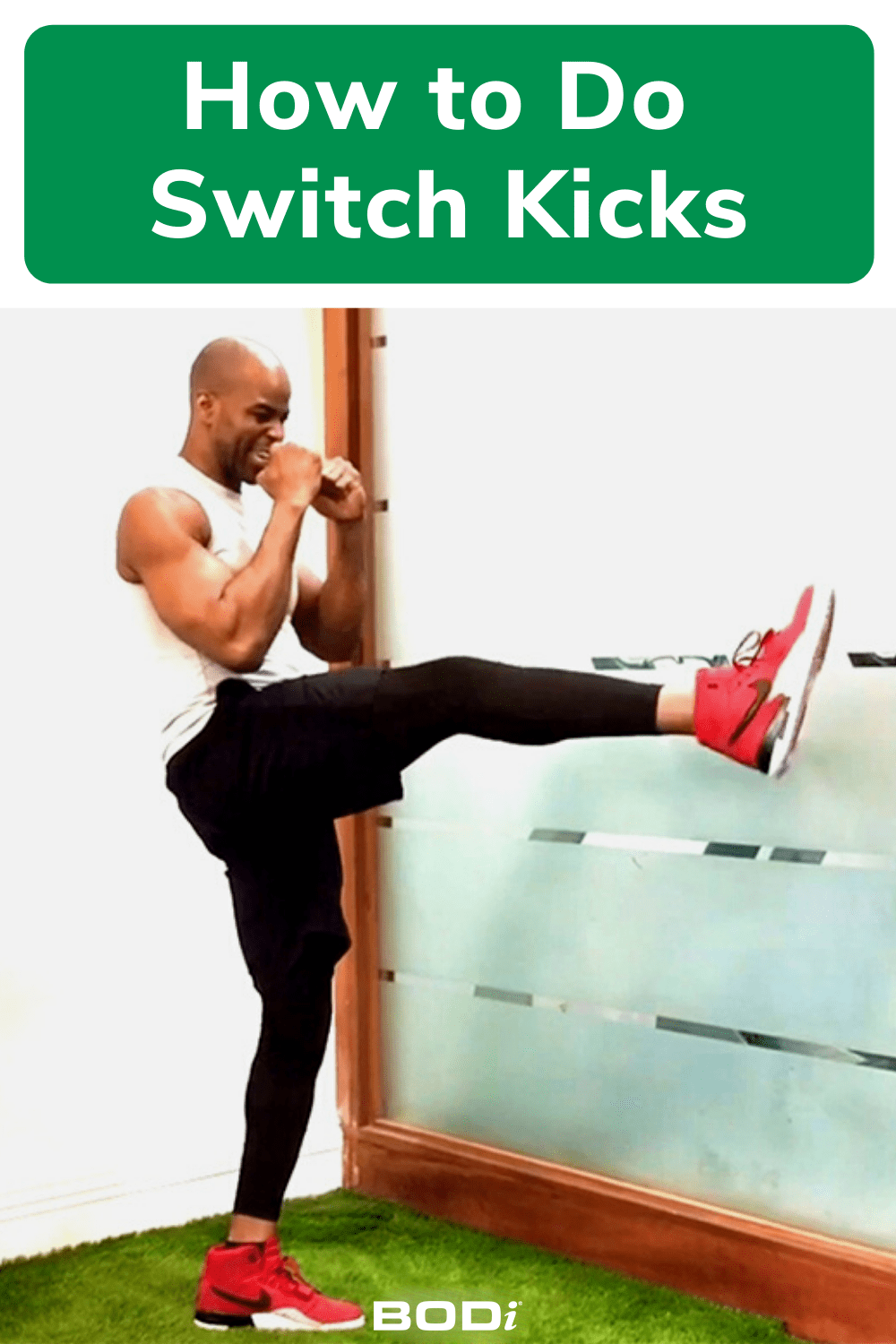Strengthen Your Core and Lower Body With Switch Kicks

An exercise with a name like “switch kicks” probably makes you think that the focus is on the legs and butt. And although the switch kick will fire up every muscle from your hips down to your toes, it also strengthens your core, explains Rebekah Miller, MS, CSCS, NASM-CPT.
“In the switch kick movement, the lower body is being targeted, as well as the abdominals,” she says. As you draw the kicking leg up toward your waistline, the abs fire up to flex your hip and stabilize your standing leg.
So, if it feels like you’ve already worked your way through every crunch and plank variation, the switch kick may help bring new energy to your ab routine.
Switch Kicks Exercise: Step-by-Step Instructions
- Stand with your feet about hip-width apart and fists at shoulder height, drawing your elbows in toward your rib cage.
- Bracing your core, shift your weight to your left foot, lift your right knee to hip height, and quickly kick your right leg forward. (Think about kicking an opponent’s midsection with the ball of your foot.)
- Draw the right foot back toward your body and shift your weight, hopping onto the right foot.
- As you switch feet, lift the left knee to hip height and quickly extend the leg, snapping the left foot forward and drawing it back toward the body.
- Continue to hop and kick with alternating feet, keeping the chest up, the core tight, and the shoulders back.
How to Make the Switch Kick Easier
Are switch kicks too advanced for your current level of fitness or experience? You can dial back the difficulty of switch kicks (but still get a great workout) by taking out the kick, and instead just lifting your knees.
- Hop from foot to foot, only bringing the knee to hip height, without extending the leg.
- You can further modify switch kicks by dropping the hop and stepping from foot to foot, bringing your knee up each time.
Crab Kicks: How to Make the Switch Kick Harder
Believe it or not, switch kicks can be made even more difficult. You can either pick up the pace, or take the standing switch kicks exercise to the floor.
“The crab kick movement adds in shoulders and glutes, as you hold a reverse tabletop position,” Miller says.
Here’s how to do crab kicks:
- Start off in a seated position with your knees bent and your feet on the floor.
- Place your palms on the floor about one foot behind your butt, with your fingers pointing toward your butt or slightly to the sides. Lift your butt off the ground and move into a reverse tabletop position.
- From this position, lift your left leg so that your knee is directly above your hip. Extend your left leg with a kick, then return it to the starting position.
- Repeat the movement on your right leg and alternate back and forth.
Just note that if you have any joint pain or instability in your shoulders, elbows, or wrists, crab kicks may not be the best option for you. “This will apply quite a bit more pressure into the upper body to ensure stabilization,” Miller explains.
Benefits of Switch Kicks
First off, switch kicks work a number of big muscle groups:
- Core
- Legs
- Glutes
Additionally, it’s also a very adaptable exercise. “You have control over the intensity,” explains Rachel Fiske, NC, NASM-certified personal trainer and advisory board member at Healing Daily.
Fitness rookies can easily modify the switch kick by omitting its hopping movement, or removing the kicks, and instead just doing high knees. As you become more adept at switch kicks, you can amp up the intensity by increasing your speed, changing your position, or tacking on movements.
It only takes a few seconds of switch kicks to get your heart pumping, making switch kicks an excellent option for HIIT or at-home cardio circuits. And because the switch kick requires you to hop from one foot to the other, it can also help improve your balance and coordination.







